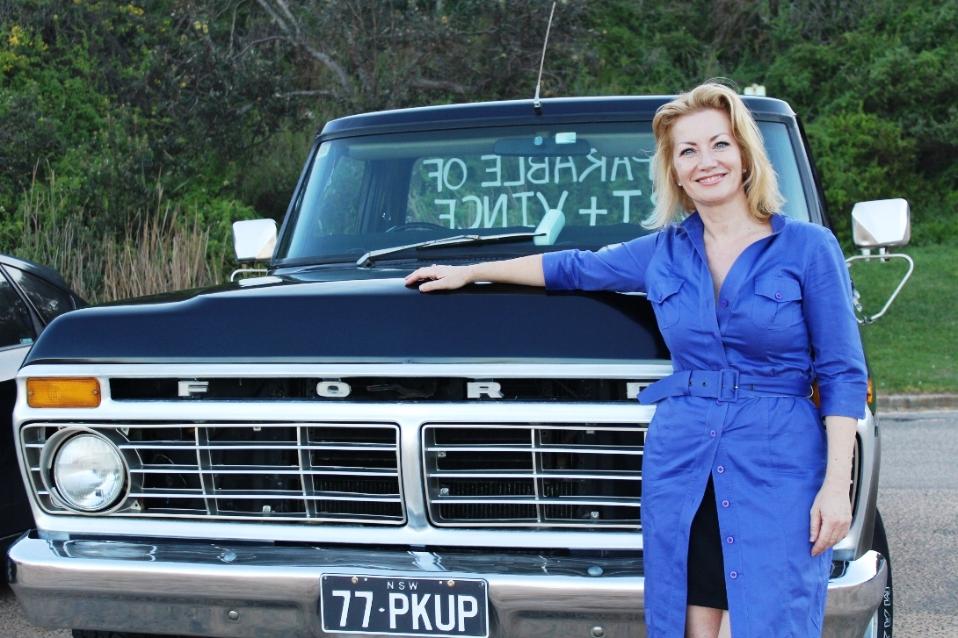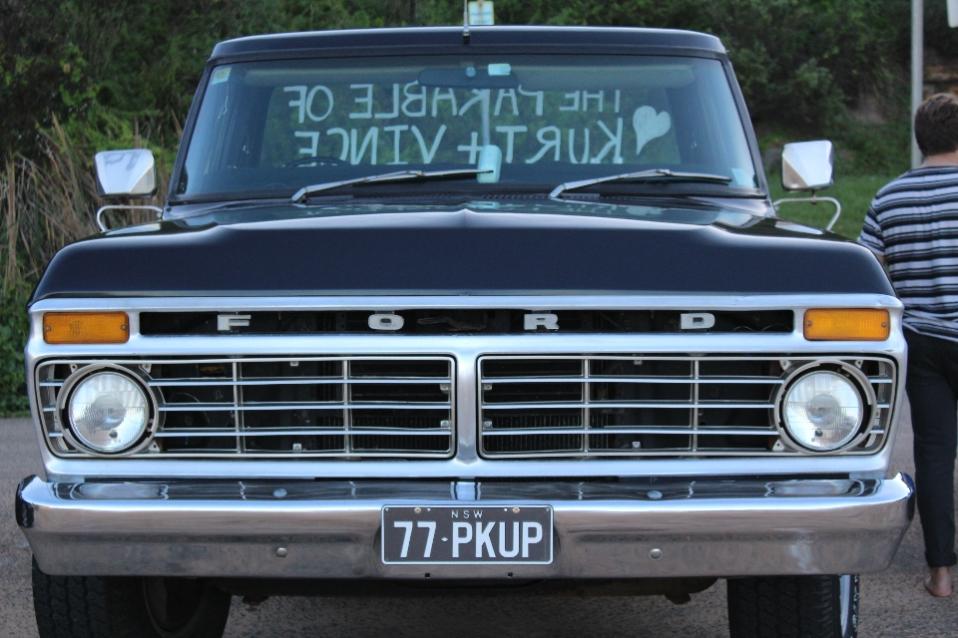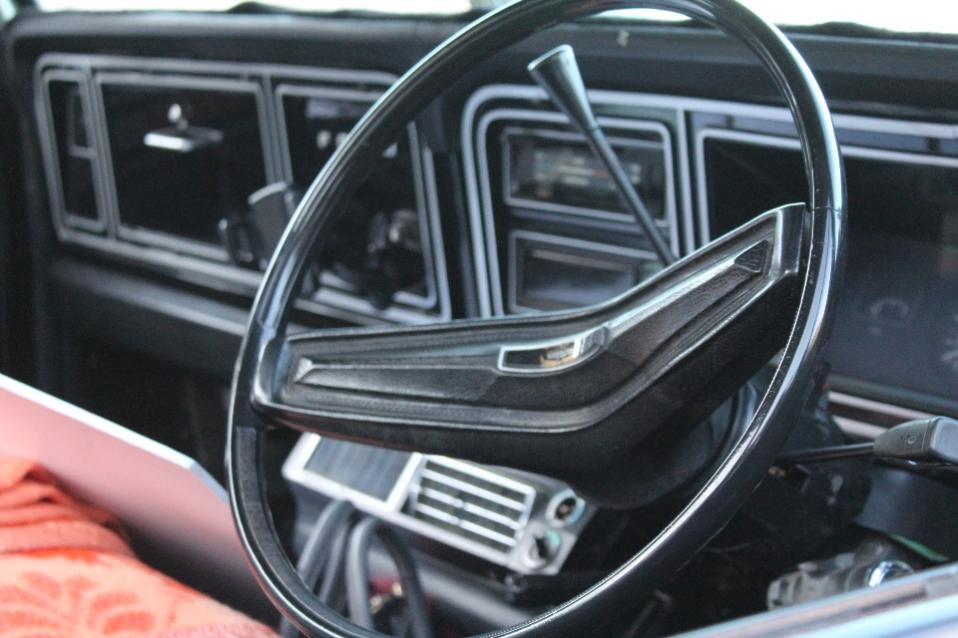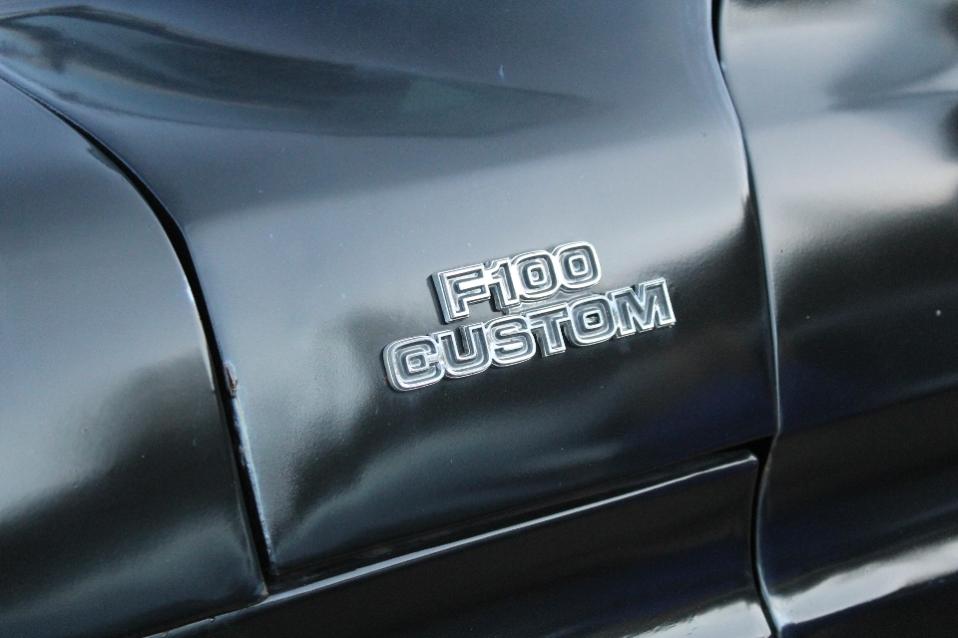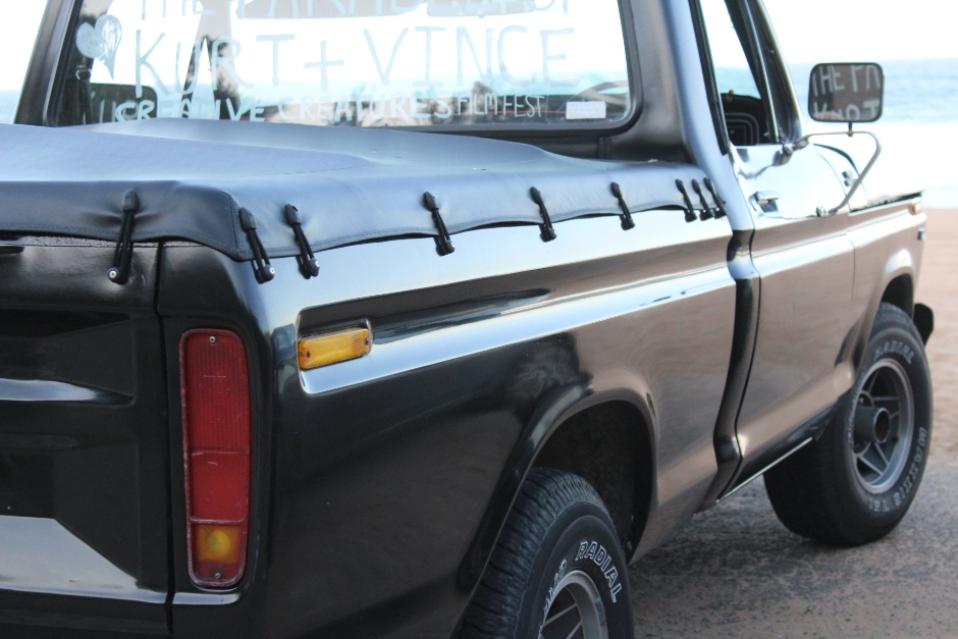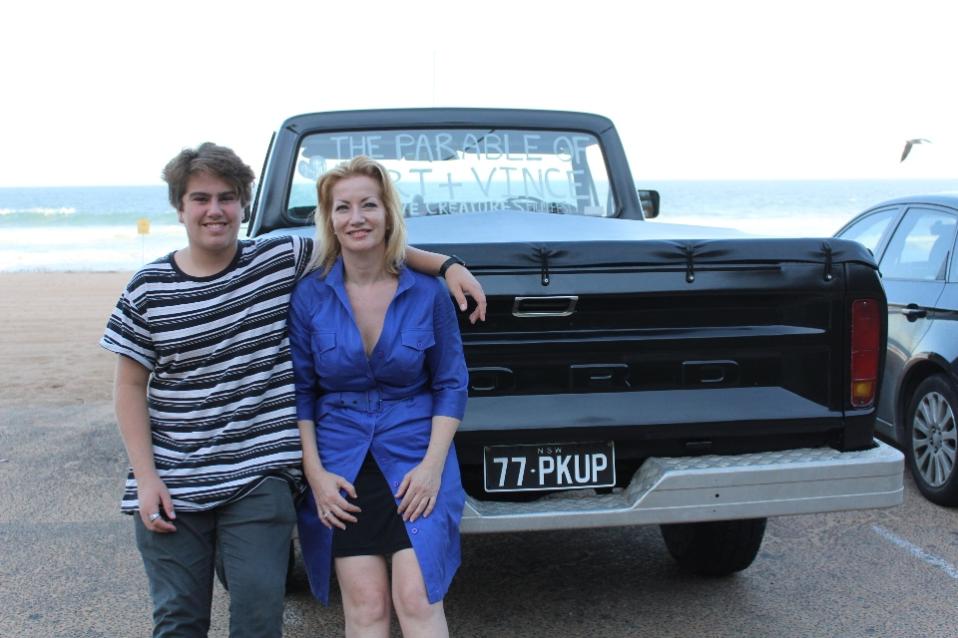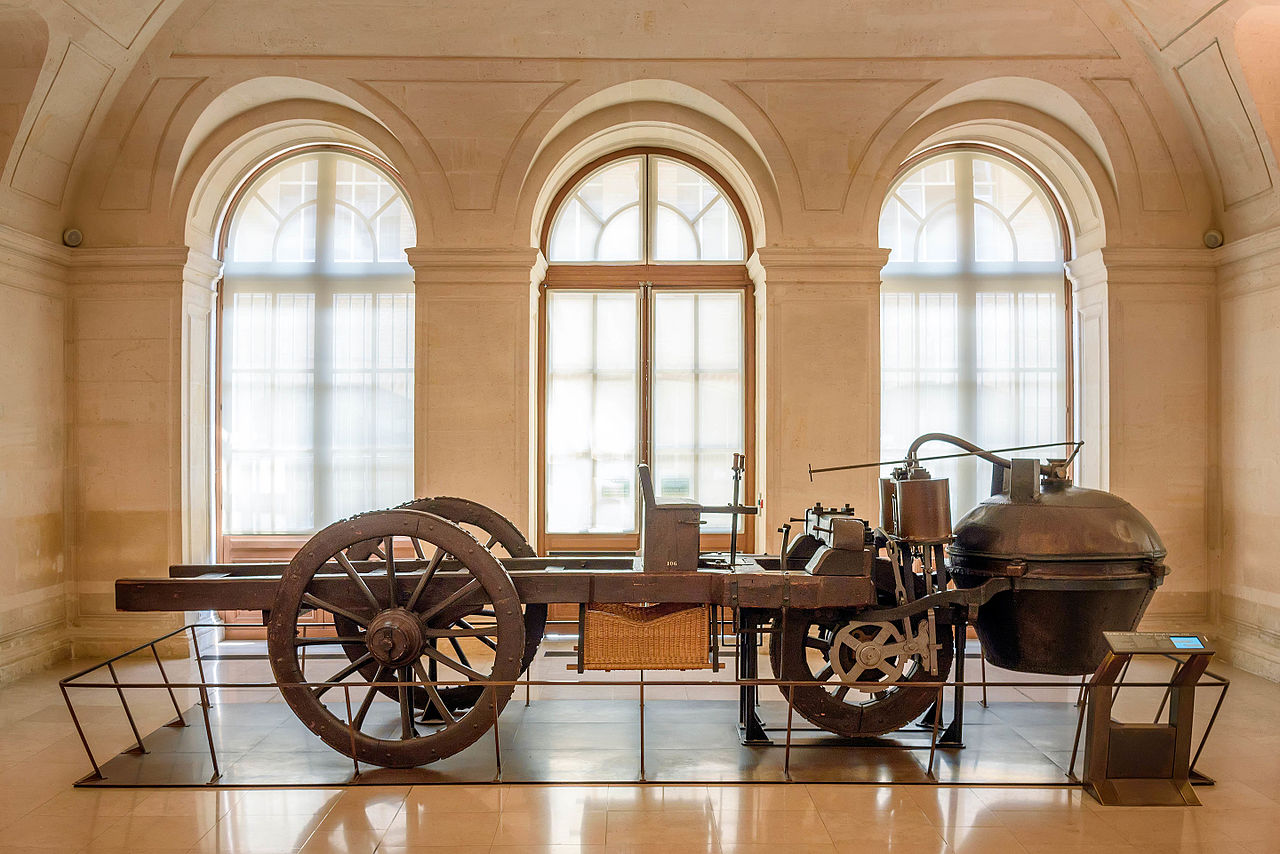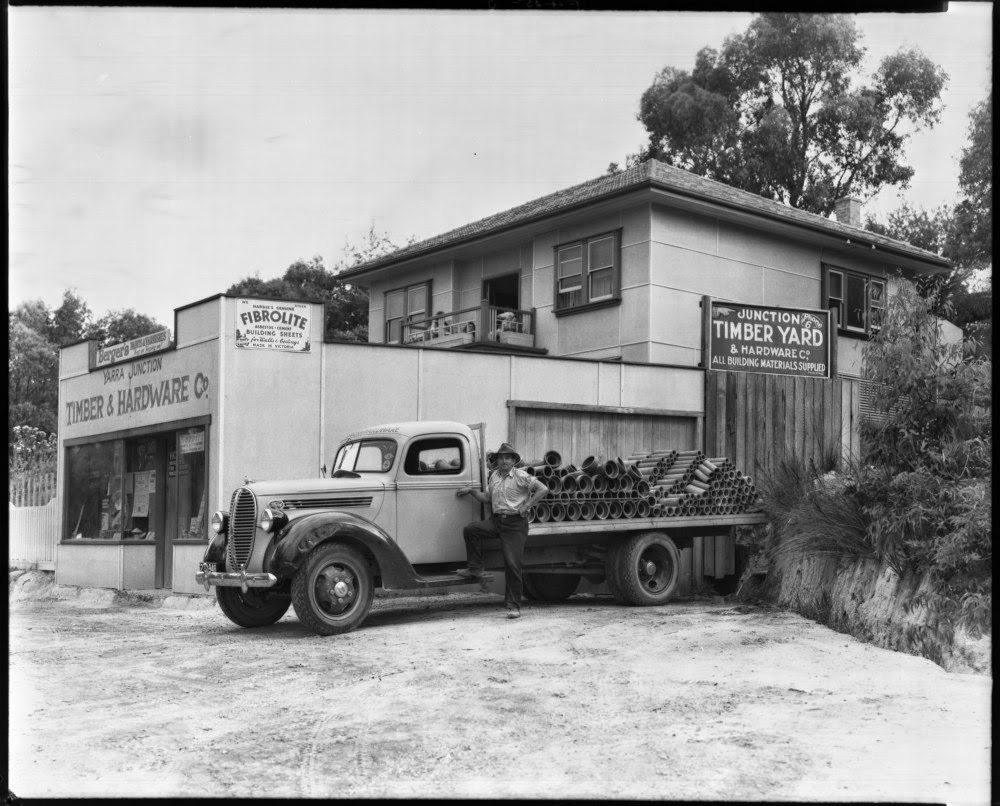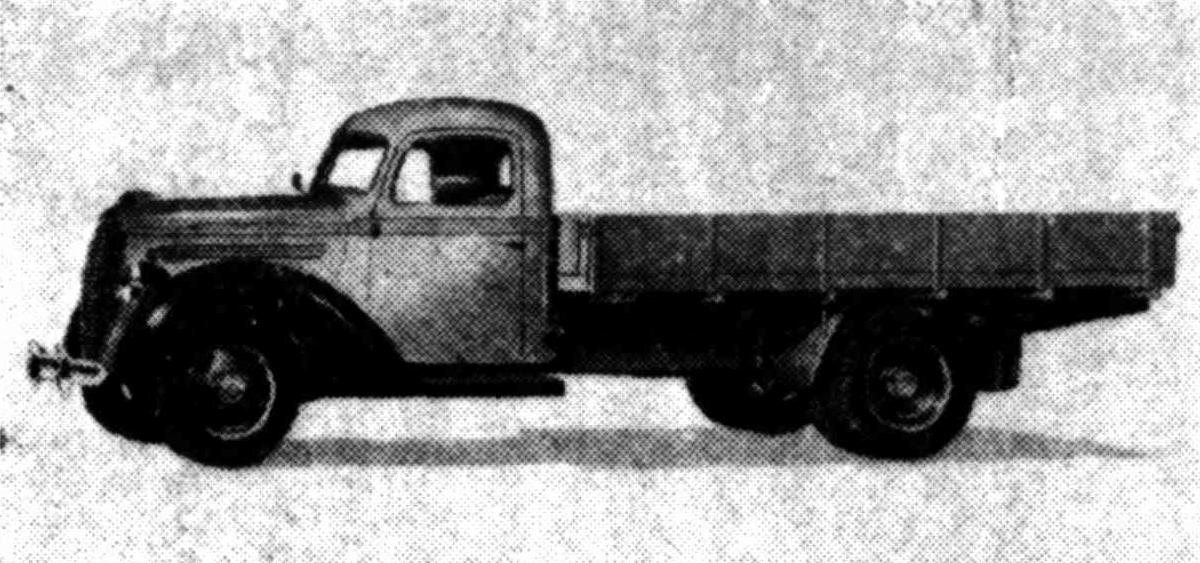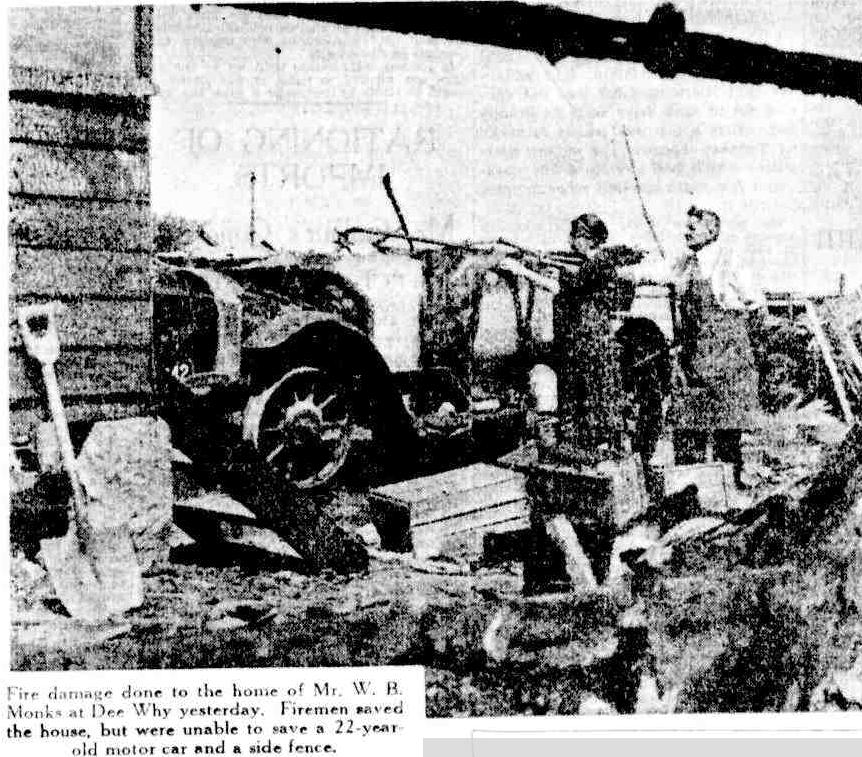Susanne brought her beauty down to Warriewood Beach so Pittwater Online News could run an insight on this iconic vehicle as well as the creators of the winning Willbe for 2018.
“I always wanted an old American truck, I thought they were so cool having seen them in so many American movies. I’m just a hoon. She has a V8, and a right-hand drive and is Australian made. For me it’s always been a passion." Susanne explained.
"I used to see them fanging around the beaches here, someone had an old red one, and I’d be – oh!
There’s just something about them and now I have one."
What was your first car when younger?
“A Volvo – it was through my ex-husband’s dad, they’re a Jewish family and he had a Jewish film friend in north London with whom he swapped a Rolex watch for the Volvo. It was a piece of junk and I don’t the watch was in its best condition either. (laughs)
It was a rust bucket and a perfect first car because it didn’t matter if I dinged it."
"For the F100 we put power steering in it and redid the grill at the front. The 1977 Aussie model didn’t have power steering, we had to research and it took ages but we found an old guy who reconfigured a Nissan PS box for the F100 and installed that. I literally could not drive her until we fitted it she’s that heavy.
"This one is a 1977. I wanted a 1970, as that’s when I was born, but she’s beautiful, and I’m glad I now have her.
"She used to belong to John Brennan, a hairdresser at Mona Vale. I think he used her for promotions, and to enjoy driving such a great truck. I have a great mechanic, also in Mona Vale, who knows how to look after her.
"We literally spend the weekends just driving around enjoying how beautiful it is here in this beautiful truck. It’s just for local use, I don’t take it out of the area.
"She makes me smile. If I’m having a hard time, she cheers me up."
The first-generation F-Series pickup (known as the Ford Bonus-Built) was introduced in 1948 as a replacement for the previous car-based pickup line introduced in 1942. Introduced in late 1947, the F-Series was the first post-war truck design from Ford. The first generation of the F-Series would remain in production until 1952. F-Series trucks were assembled at sixteen different Ford factories. Serial numbers indicate the truck model, engine, year, assembly plant, and unit number. The most common model was the F-1 with a 6½-foot bed followed by the F-2 and F-3 Express models with an 8-foot (2.4 m) bed. The F-Series was sold in eight different weight ratings, with pickup, panel truck, cab-over engine (COE), conventional truck, and school bus chassis body styles.
They first appeared in Australia in August 1948:
NEW 1948 FORD V8 TRUCKS
Styling of the 1948 Ford V8 trucks has achieved a combination of smart, modern lines with true truck massiveness and solidity. Certain styling features have also been designed to serve / a practical purpose. .The recessing of the headlamp and radiator grille reduces the possibility of damage. The bonnet front louvres are also more than ornamental, they not only provide air intake, but also house the bonnet latch and safety catch, The entire front end structure is rigidly braced and the front guards are fabricated from heavier gauge material and are designed for adequate clearance with maximum tyre size. Seating room, head room, floor space and vision have all been materially increased in the- new cab. The threeman seat provides real comfort for the man behind the wheel and for passengers. The seat cushion is well sprung for maximum comfort on long journeys yet is solid enough to stand up to the rigours of hard commercial work. Seat is adjustable for and aft, moving easily on roller bearings. Allround vision is particularly good. Windshield is higher and wider and is ? of one-piece construction, there being ? no centre pillar. Windscreen corner pillars are slender yet very sturdy. Blind spots have been reduced to a minimum making for greater driving' safety. Door windows are wide and there is a big, one piece rear cab window. Detail constructional changes in the all-steel cab have added strength to the entire structure.

THE 2-ton 1948 Ford V-8 truck showing the new design of cab and front end.
Although many 'made do' with what was still available or bought surplus WWII trucks, there was still a large appetite for new vehicles:
New Cars For The First Time Since Pre- War Shows
By J. T. KELSO, Chairman of the Newcastle and Hunter River Section of the Motor Traders Association of N.S.W.
At the 1947 Newcastle Show, the public will see, for the first time since pre-war shows, many new motor cars and trucks. Last year only one small English car was shown, although a few commercial vehicles were displayed.
With the gradual return of peacetime conditions, everyone in the automotive business is expecting to get back into the volume business, but during the past 12 months the industry has experienced many labor and material difficulties. At the present time it is understood that 13,000 chassis are in Australia awaiting bodies. There is also lack of shipping to bring bodies from South Australia around to the eastern States. Motor parts and accessories, especially body nardware, are in very short supply, and car manufacturers have an exceedingly hard job in obtaining 'their requirements. If everyone in Australia undertook to produce the maximum of his capacity, and if the Government greatly reduced taxation, it is safe to say that in six months' time every cloud on our industrial and economical horizon would have disappeared, and in a comparatively short time new vehicles would be available to the public in increasing numbers. In 1939 the average price of the cheaper cars was £350 and the Government at that time levied sales tax at 6 per cent., so that the average amount of sales tax received by the Government would be £21 per unit. Sales Tax Increase Today the average price is in the vicinity of £600 and the Government levies 10 per cent, sales tax, so you can see that the amount collected by the Government is nearly three times that of prewar. On the other hand, the Prices Commissioner sees that the amount of commission received by the distributor or agent is no more per unit on the £600 vehicle than when it was sold for £350 in 1939. Before the war the petrol tax was 8d oer gallon (it is now lid). Eliminating the excise on locally refined petrol, and figuring imports at approximately 344,000,000 gallons, the tax on fuel for land transport exceeded £12,000,000 per annum.
Mr. J. T. Kelso.
The pre-war consumption of petrol will now yield £18,000,000 a year to the Federal Government. We must add approximately £30,000,000 a year which is paid to the drivers of trucks and public passenger vehicles. The public paid, in 1939, more than £7,600.000 in tramway fares, and motorists paid to the State Government more than £7,000,000 taxation. The cost of transport was further increased by the Sales Tax, which added to the cost of transport vehicles and continually adds to their cost of maintenance. The heavy tariff on parts of motor vehicles imported is a further additional cost to transport. Transport Costs While many organisations watch the price of bread, or the cost of milk, no one appears to give any attention to the millions the people have to spend on the transport of their household commodities as well as themselves. Neither does anyone appear to protest against the time wasted in transportation. Surely here is a field of study to Investigate the factors that create these high costs of transportation which lower the purchasing power of all wage-earners. The difference between 8d and 1ld per gallon on petrol means that approximately 800,000 motorists will pay £6,000,000 more for their petrol and have this much less with which to buy other goods. We hear much' about roads and railways running parallel and for that reason road transport is an unnecessary duplication. It is on these grounds that much of the repression of road transport has been created. This is an entirely wrong assumption, for the reason that duplication would exist only when rail and roads provide identical services to the people. Road services operating at different times to the rail timetable are additional services to the people, not a duplication. Road vehicles also serve the homes adjacent to the roads, but the railways cannot deliver passengers or goods direct to homes or farms. An examination of railway maps will disclose the long distances between railway stations, which require an initial road service to reach them.
Railways were built to where towns and villages were established and these towns and villages were linked by roads which form links in a continuous chain of highways and were built on land reserved for road purposes in the early days of land settlement. With the reconstruction of roadways from the revenue gained from motor taxation, the opinion was erroneously formed that they had been specially constructed after, instead of before, the railways were built. The repression of carriers and public passenger vehicles in the country has inflicted great hardships, causing serious inconvenience, loss of time, and in many cases isolation and excessive marketing costs. Approximately 30 years ago agriculture in Australia was nearing its maximum production — a maximum production because it is limited by transport facilities.
Transport to get crops to market is essential, and land near to transport facilities was close to full production. Since then, the motor vehicle, followed by good roads which have been financed by motor and petrol taxation, has enabled lands to be tilled when many miles from fixed rail transport. The progress which followed the advent of the motor vehicle is disclosed by the Government Statistician. In 1910-11 the areas under crops in the Commonwealth had reached 11,893,838 acres. By 1939-40 the total had increased to 23,497.780 acres. Taxation, direct end indirect, of motor transport— tariff, sales tax on vehicles and spare parts, registration fees, petrol tax, etc.. reduces the income of the primary producer, and, in turn, lowers his ability to purchase the production of other industries. Several manufacturers, including General Motors and Ford, have announced that they are building Australian cars, and I believe that at least one of these models will be introduced to the public either late in 1947 or early in 1948, so no doubt if these expectations are realised, it will be possible-to have some of the units on display at next Newcastle Show.
Australian Car Purchase At All-Time Record
Small Makes Popular; 80 per cent. British
AN all-time Australian record was established in the monthly retail sales value of new cars registered throughout the Commonwealth in August last, when 6372 Units were brought into service. The retail value, on a conservative basis, aggregated £4,198,860, averaging £639 per vehicle. Of the new cars registered during that month, 80.6 per cent, were British, and comprised a large proportion of small cars. '
Not since 1928 has such a high volume of new cars been registered in Australia In any one month. In 1928 Ford and Chevrolet cars were selling in this country at the rate of many thousands a month at just over £200 per unit, and caused an Australian peak registration. Total registration of new cars in 1928 reached 73,556 units, a figure that has not been approached during the last 20 years.
In August, 1948, new trucks and utilities registered totalled 2280 of a retail value of approximately £1,600,000. This again, states the Dunlop Rubber Co., which provide these figures, is conservatively based. Thus In August last, 8852 new units representing an outlay of £5,798,860, came on to the road.
That 1948 figure is easily the highest ever invested in Australia in one month in new motor vehicles. That the new vehicles were badly needed— with many tens of thousands more to follow — is reflected In the fact that 370,000, of Australia's cars and commercial vehicles are over 15 years old, whilst 96,014 cars and 126,742 commercial vehicles are over 20 years old. Most of these vehicles are today giving a low mileage for petrol consumed, arc Inefficient, and a large percentage of them overdue for the scrap heap. Applications already In hand for new cars and utilities throughout the Commonwealth total 96,0060. Only by replacement with modern vehicles— and this will mean a large financial outlay— can the Australian automotive transportation system be brought up to a condition of efficiency and economy, a matter of major importance, because cost of motor transport has a definite effect on the cost of living and the progress of the nation. Australian Car Purchase At All-Time Record (1948, October 15). The Farmer and Settler (Sydney, NSW : 1906 - 1955), p. 9. Retrieved fromhttp://nla.gov.au/nla.news-article122980527
The Ford F-Series is a series of light-duty trucks and medium-duty trucks (Class 2-7) that have been marketed and manufactured by Ford Motor Company since 1948. While most variants of the F-Series trucks are full-size pickup trucks, the F-Series also includes chassis cab trucks and commercial vehicles.
The Ford F-Series has been the best-selling vehicle in the United States since 1981 and the best-selling pickup since 1976/77. It is also the best selling vehicle in Canada. As of the 2018 model year, the F-Series generates $41.0 billion in annual revenue for Ford, making the F-Series brand more valuable than Coca-Cola and Nike.
For the 1953 model year, an all-new version of the F-Series made its debut. Increased dimensions, improved engines, and an updated chassis were features of the second generation.
Additionally, a change to the F-Series naming scheme would remain in place to the present day. The half-ton F-1 became the F-100 (partially influenced by the North American F-100 Super Sabre); the F-2 and F-3 were combined into the F-250 while the F-4 became the F-350. Conventional F-Series trucks were F-500 to F-900; COE chassis were C-Series trucks.
The sixth generation of the Ford F-Series is a line of pickup trucks and medium-duty commercial trucks that were produced by Ford from 1972 to 1979. This generation was launched in December 1972 for the 1973 model year. These were the last generation of trucks to use the F-Series chassis introduced in 1965. After a decade as a compact SUV, the Bronco was redesigned as a shortened version of the F-Series. This generation also marks the introduction of the F-150, which today is the most popular model.
This generation is noted for the body panels' durability as Ford used extensive amounts of galvanized sheet metal, zinc coated steel, zinc rich primer and fender liners, to fight corrosion.
In 1973, a new model was offered: The heavy duty F-350 V8. This was a new heavy-duty pickup made with contractors and camping enthusiasts in mind. It rode on longer wheelbase than an F-100 or F-250 (140 in (3,600 mm) vs. 133 in (3,400 mm)) but had the same overall length. Ordering the Camper Special package for the F-350 SRW made it a "Super Camper Special", which was designed for the much heavier slide-in campers coming on the market at that time. For 1974 (introduced September 21, 1973), the F-Series became available in an extended cab for the first time. Dubbed the "SuperCab", it offered the six-passenger seating of the crew cab in a slightly shorter length, and competed with Dodge's Club Cab. For 1975, the F-450 was introduced; this truck was designed with a heavier GVWR (over 6,000 lb (2,700 kg)) and maximum payload. In 1975 (1976 model year), this familiar "split-grille" design was given a slight face lift to feature black accents around the headlights and a refined overall appearance.
1977 models received a redesign of exterior trim, with the cowl insignias made smaller and moved near the windshield. The bed received a rectangular fuel door to hide the gas cap. The gas tank located behind the seat was discontinued due to safety concerns. It also would be the last year of the medium-duty F-500.
Starting in the 1977 model year Ford dropped the "Super" from "Super Camper Special" in favor of calling the F350 models with camper packages "Camper Special", a name that was previously only assigned to F250's with camper packages.
1978–1979
1978 Ford F-100 Custom
For 1978, the appearance of the F-Series changed the most since 1972, when the split grille was overhauled in favor of a single-piece grille insert design. Much larger than before, the grille no longer incorporated the headlights, turn signals or the "F O R D" letters. The headlights were located in housings beside the grille, and the park/turn signal lamps were located below them. Additionally, a new chrome-plated letter set reading "F O R D" could now be seen on the hood immediately above the grille. In 1977 (1978 models), the round headlight design was retained for the Custom trim level. A luxury "Lariat" trim was also introduced for 1978; Ranger, Ranger XLT, and Ranger Lariat trim levels incorporated rectangular headlights with optional chrome headlight bezels and the chrome grille insert. Dual Fuel tanks in the bed became standard. For 1979, round headlights were replaced by rectangular ones on all trim levels, and the surrounding grille insert that framed the headlights was now available in either black or chrome to match that of the aluminum grille frame. Also new for 1978 was the option of part- or full-time four-wheel-drive on SuperCab models. Full-time four-wheel drive utilized a chain-driven NP203 transfer case, while part-time four-wheel drive was equipped with a gear-driven NP205.
Australian production
Ford Australia assembled right-hand drive sixth generation F-Series that were fitted with a lineup of locally sourced engines. The base trim level was called Custom, with a higher spec XLT level only available on the F-100.
1979 Ford F100 Custom XLT, with right-hand drive in Australia – photo by Bidgee
Model history
1973–1975
Initially they were available with US sourced 240 and 300 CID Straight-6 engines. From August 1974 the 240 CID engine was replaced with locally sourced 250 CID Straight-6 and the 300 CID was replaced by the locally sourced 302 Cleveland V-8 engines. The 302 Cleveland was a destroked 351 Cleveland built using tooling exported to Australia after the closure of the Cleveland production line. The F-100 with a 302 Cleveland model was the first Australian Sixth Gen to receive an automatic transmission as an option, the six cylinder powered models and the larger F-250 and F-350 were limited to a four-speed manual. The Canadian built 4wd F-250 was added to the lineup in 1975 with the 300CID Straight-6 engine to supplement the locally assembled rear-wheel drive F-100, F-250 and F-350.
1976–1977
The 250CID Straight-6 was upgraded with a new crossflow head and rebadged as the 4.1 litre, increasing power and lowering emissions to meet new legislation being introduced in Australia. At some point during 1976, the GVM of the F-100 was quietly increased from 2586kg to 2770kg ahead of the release of the 1977 specs. In 1977 a locally assembled 4wd F-100 with Australian built engines was added to the lineup to replace the fully imported 4wd F-250.
1978–1979
In 1978, the 351 Cleveland V-8 replaced the 302 Cleveland V8 in the F-250 and F-350. The 302 Cleveland continued alongside the 351 Cleveland in the F-100. The 4.1 litre inline 6 cylinder continued to be sold across the range. In 1979, the 302 Cleveland was discontinued, leaving the standard engine as the 4.1 litre Straight-6, with the 351 Cleveland (badged as the 5.8), as the only upgrade, except the F-100 4WD which was only available with the 5.8 litre V8. The F-250 and F-350 had an automatic gearbox as an option for the first time in Australia, though still only on the V8 engine.
Argentine production
Like Ford Australia, Ford Motor Argentina assembled CKD F-series kits and fitted their own engines. These were the Ford Motor Argentina cast and assembled straight-six and Y-Block V8 along with Perkins 4-cylinder diesels. [1.]
As for featuring in movies, film clips and television prgrams - Ford trucks, and vehicles for that matter, have been in many.
There's hardly a more iconic symbol of the early years of MTV than the ZZ Top Eliminator car. A fixture in several videos—including “Gimme All Your Lovin',” “Sharp Dressed Man,” and “Legs”—the fire-engine red 1933 Ford coupe was the culmination of guitarist Billy Gibbons' lifelong fascination with hot rods.The car would later be known as the 'Eliminator'.
'There's a 1932 Ford Coupe, American Graffiti, a 1973 XB GT Ford Falcon, Mad Max. As for Ford trucks; there's a Ford F-150 in Dead Aviators, 1999, Ford F-150 in Mr. Ice Cream Man, 2002, Ford F-150 in Altered, 2006, Ford F-150 in It Runs in the Family, 2003 another Ford F-150 in 8 Mile, 2002 and in Mater's Tall Tales, 2008-2012 and in Dallas, 1978-1991.
Some experts state these are the seven best movie pickup trucks of all time. The Expendables (2010) Twister (1996) The Bridges of Madison County (1995) The Cannonball Run (1981) Back to the Future (1985) Hooper (1978) Take This Job and Shove It (1981)
There's even a Ford truck in Icehouse's No promises, Music Video, 1986 - Ford F-150
Although at least one Ford arrived in Australia in 1904, just a year after the formation of the Ford Motor Company, and yes, had a connection to a gentleman who has a connection to Pittwater through sailing, the fuller local story of Ford began in October 1909 when R.J. Durance and his wife Ivy came from Canada to Port Melbourne to open an Australian branch.
The Durances brought fully assembled Fords in and demonstrated them to the towns of the Australian bush with great effectiveness. Durance asserted: “Ford agencies were appointed anywhere smoke came out of a chimney”.
M. Durance, the foreign representative of the Ford Motor Company, who has been on a visit to Australia, making Melbourne his headquarters, leaves for India a week hence. MOTORING NOTES. (1910, February 26). The Daily Telegraph (Sydney, NSW : 1883 - 1930), p. 21. Retrieved from http://nla.gov.au/nla.news-article238360697
And then in 1920:
While the advent of the car and motor lorry has not had a considerable effect as yet on the utility of the horse on the farm, a Government census of the horses in the United States shows that they are disappearing from city thoroughfares. In 1910 there were 128,334 horses in New York. In 1917 the number has fallen to 108,036, and in 1919 to 75,740.
Trade Notes. Mr. A. N. Lawrence, sales manager of the Ford Motor Company, of Canada, after spending a few days in Adelaide, left for Tasmania. When speaking at the staff dinner of Duncan & Eraser, Limited, Mr. Lawrence said that if roads such as existed in New South Wales were the rule in Canada, the persons responsible would soon be' deprived of office. Duncan & Fraser, Limited, has received advice of the first shipment of two postwar model H.G. De Dion chassee by the steamer Kyber, which is expected to arrive about June 26.
THE GENESIS OF THE FORD IN AUSTRALIA
By A. H. Davies.
Previous to the year 1906, when we became actively connected with the Ford car in Australia, one or two individuals brought out a couple of models with the idea of placing the agency, but had met with no success. In the year 1906 Henry Ford produced the first model with which he made a bid for popularity and through instituting- quantity production, he hoped to sell this model (which was called "Model N" ) , being a single-seater car with beetle back, fitted with 4-cylinder engine of 15 h.p., at 500 dollars and although he never get down actually to that price, yet he was able to sell thousands of them over the world, and it can safely be said that the history of Ford cars in Australia started with this model.
Through our New York office we were asked to place the agency of the car, but finding it difficult to make satisfactory arrangements, we decided to interest ourselves actively in the marketing, and imported about a dozen of the cars. Upon receiving same, we placed further orders for the later models "R" and "S" first of all retailing the cars through a firm whose principals were Dr. Arthur Marks* and Mr. Gordon.
It was on receipt of the first of the "Model T" cars early in 1909 that we first established our selling organisation, but in these early days the expense of marketing was very high, and for the first three years we made quite substantial losses, and it was not until the end of the fifth year that we got on the right side of the ledger in our Ford business.
By 1914 the car was well established on the Australian market and sales were far more readily made. By that time we had established a dealer organisation in the country, and therefore a big percentage of our business could be classed as wholesale. I think ! that the first agent we ever appointed was Mr. D. V. Clifton. I well remember the day he came into my office! with Mr. Barkell, of Bennett and Banhell. He told me that Clifton was an agent for their bicycles and had gone to Barraba To start, and asked; if we would mind letting him have the agency for Ford cars, because he thought it would run well in conjunction with the other lines that Cliftons would be selling, and the friendly relationship established then has been continued ever since, because Mr. Clifton, through his Company at Barraba and Bingara, has continued uninterruptedly as Ford dealer up to the present day.
Didn't like Ford
In May, 1908, on my way through to England, I called on Colonel Tarrant, of Tarrant Motors Pty. Ltd., of Melbourne to try and interest him in taking the Victorian agency, at first being turned down flat, but in the end he agreed to take two cars. I am afraid that they did not interest themselves in the agency, probably because they could not see what the future held, because on my way back in December of the same year they had not placed any further orders. While passing through South Australia, I was unable to get anyone to take up the agency there.
Sent own Representative.
Early in the year 1910 the Ford Company decided to have their own resident representative in Australia, and Mr. Robert Durance, now of the Durance-Mayston Motors, Melbourne, a Canadian by birth, was appointed, and opened up an office in Melbourne. A little previous to Mr. Durance's arrival, Mr. Gordon Mc Gregor, who was then the Vice-President of the Ford Motor Company of Canada Limited, visited Australia, and before he left, we voluntarily, gave up our agency which was then for the whole of Australia, but retained the States of Queensland, New South Wales and Victoria (including Tasmania.) This left South Austrialia and Western Australia in which States he was at liberty to place the agency.
The Ford Model N is an automobile produced by Ford Motor Company; it was introduced in 1906 as a successor to the Models A and C as the company's inexpensive, entry-level line. It was built at the Ford Piquette Avenue Plant.
The Model N diverged from its predecessors in that it was a front-engine car with a four-cylinder engine. The 15 hp straight-four drove the rear wheels via a long shaft. This was also the first American car to use vanadium steel. The car had a wheelbase of 84 in (2,100 mm).
A successful model, 7000 cars were made before production ended in 1908. At US$500, the car was viewed as highly affordable at the time; by contrast, the high-volume Oldsmobile Runabout went for $650, Western's Gale Model A was $500,[6] the Brush Runabout $485, the Black $375, and the Success for $250. Maroon was the only factory color for the Model N.
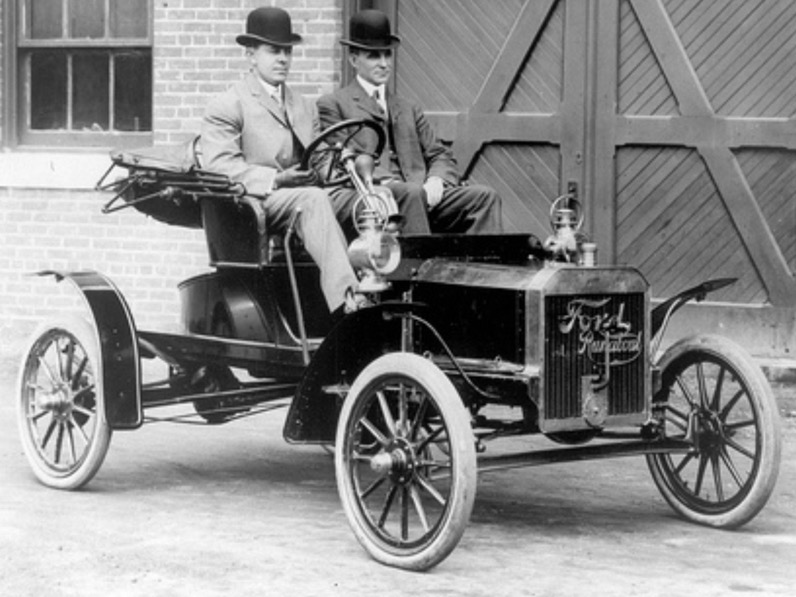
David Gray and Henry Ford seated in the 1905 Ford Model N runabout at the back entrance of the Ford plant on Piquette Avenue Plant in Detroit, Michigan, where the car was made. The prototype, or #1, was the only N running and demonstrating during the late winter and early spring 1906 auto shows. A Cycle and Automobile article, August 1906, talks about the original N/demonstrator on the 8th page (magazine page number 115). At that time, the car is reported to have 30,000 miles on it.
Dr. Arthur Marks was a brother of Walter Marks, whom Readers may remember was an Australian and RPAYC Commodore associated with the
postponed due to WWI America's Cup of 1914. Both brothers sailed and sailed here during the early days of leisure sailors visiting the Pittwater estuary.
DR. H. MARKS
Victim of a heart attack, Dr. Herbert Marks, leader of the ear, nose, and throat section of the Australian medical profession, died suddenly at his Woollahra; home on Sunday. He was the eldest son of the late Mr. James Marks, M.L.A., and a brother, Mr. Walter Marks, M.H.R., and Dr. Arthur Marks. He is survived by Mrs. Marks, who is a daughter of- the late Mr. C. E. Pilcher, K.C., M.L.C., and by two sons, John and Kenneth. Mrs. Arthur Schute and Mrs. T. J. Watson are sisters, and his cousins include Dr. Watson, of Canberra, and Mr. Theodore J. Marks, Mrs. Spencer Brunton, Mrs. C. W. Mars-den, and Mrs. Hobert Steee Bowker.
Dr. Marks, who would have been 66 years old in November, was honorary ear, nose, and throat surgeon at the Royal Prince Alfred Hospital, and was really the founder, and moving spirit s of the ear, nose and throat braunch at that hospital. He was also an honorary surgeon at the Sydney Hospital, and for many years, and at the time of his death was prominently connected with the Lewisham Hospital. DR. H. MARKS (1929, July 16). Daily Advertiser (Wagga Wagga, NSW : 1911 - 1954), p. 2. Retrieved from http://nla.gov.au/nla.news-article142814620
In 1923 Ford Canada sent executives Hubert French and Mel Brooks across to investigate expansions.
COMING TO AUSTRALIA
Henry Ford Plans Factory Here AT COST OF SEVEN MILLION DOLLARS
Mr. Henry Ford is about to spend £1,400,000 in establishing five assembling plants in Australia. According to a message from Detroit (Michigan), Mr. Phillip Grandjean and Mr. Hubert French, secretary and assistant sales manager respectively of the Ford Canadian Company, will leave shortly for Australia.
WILL AUSTRALIA SEE THIS?
An Instructional class at the. Ford plant at Detroit. Thousands of workers attend daily lectures after each eight-hour shift The works are kept going 24 hours a day.
In January of this year an Australian who had. just returned from America stated that he was informed in New York that Henry Ford had definitely decided to open a branch factory in Newcastle for manufacturing: motor cars, but the long mining stoppage on the Maitland field had 'frightened him off.' The result was, said the Australian, that though Ford still proposed to open an Australian factory, it would probably be located in Tasmania, and would most likely be operated by hydro-electricity. Henry Ford, who is the son of a Michigan farmer, was apprenticed to engineering as a boy, and after trying his (hand at farming: he built his first motor engine, and completed his first motor car in the backyard of his home In Detroit. He built another car, and then, with the aid of several other men, went into 'the automobile business. In 1&19 it cost him £15,000,000 to buy out the other shareholders. Last year it' was estimated that Ford's wealth was £450,000,000 — twice Rockefeller's estimated fortune.In 1910 Ford was producing 18.000 cars a year; in 1921 he produced a million and a quarter.
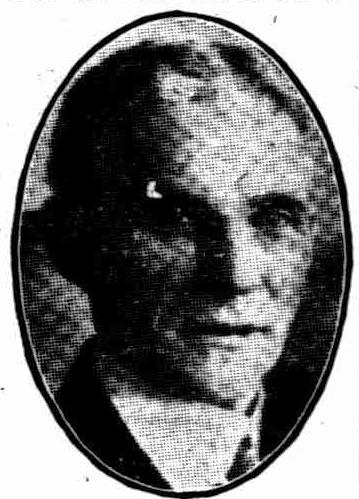
HENRY FORD
The Canada Ford Company is a branch, although a distinct entity, of | the parent company at Detroit. For the purpose of the supplying of ' the Ford car to Australia from the Canada Ford Company, the Commonwealth is grouped into territories of operations. Each State of the Commonwealth, as a territory of operation, must confine its business to its own particular territory.From From time to time rumors have been current that Ford was coming to capture Australia with his enterprises and industries, but until now there has been no definite move to do so.
MR. H. C. FRENCH, who is on his way to Australia in connection with the erection of a Ford factory in this country.
FIRST FORD.
The first Ford car was in the early days of manufacture a more expensive purchase than the Cadillac. It was more expensive because costs were higher. Ford pondered over this problem for a long time. It was not in harmony with his basic ideas for cheap transportation, and the thought came to him one day of setting a retail price for his product and figuring costs afterwards. As far back as 1909, in an article written by him in a Detroit newspaper, he said: — 'The automobile of the past attained success in spite of its price because there were more than enough purchasers to be found to take the limited output of the then new Industry. Proportionately few could buy, but those few would keep all the manufacturers busy, and prices, therefore, had no bearing on sales. The automobile of the present is making good because the price has been reduced just enough to add sufficient new purchasers to take care of the increased output. Supply and demand, not cost, has regulated the selling price of automobibs. 'The automobile of the future must be enough better than the present car to beget confidence in the man of limited .means, and enough lower ii» price to insure sales for the enormously increased output. The car of the future, 'the car for the people,' the car that any man cap own, who can afford a horse and carriage, and, mark my words, that car is coming sooner than most people expect. 'In the low-priced car dwells the future success of the automobile. Comparatively few persons can afford even a thousand dollar car. A limited number of factories can supply all the demand for high-priced cars, but the market for the low-priced car is unlimited. The ear oi the future will be light as well as low in r-Jict. This means the substitution of quality for quantity, even to the use of materials not yet discovered.' In 1919 and 1920 there were changes in Ford prices. These changes were necessary because of the increased cost of materials. However. Ford's decision, made years before, supporting a low-priced car and a single chassis model for all types, fairly stunned his subordinates and the automobile world in general.
Ford foresaw that the automobile had ceased to be a plaything of the rich — that there was a big and definite waiting market for low cost transportation. He had been preparing himself for that move -ever since he became interested in highway locomotion. He had carefully thought it out, and had found no weakness in his reasoning. The automobile world generally gave him about six months of existence if he persisted in pursuing his announced policy. Instead of decreasing, his business became heavier than ever. Years before publishing his decision he had charted a definite course, and he followed it. There was no necessity for him. broadcasting his ideas then, because the market was not ready for the acceptance of them. When he did make it the trade was ready, but so many persons knew it. Subsequent developments have proven the correctness of that decision. COMING TO AUSTRALIA (
1924, October 18).
The Mail (Adelaide, SA : 1912 - 1954), p. 30. Retrieved from
http://nla.gov.au/nla.news-article63796765
On December 23, French wrote recommending the establishment of manufacturing plant in Tasmania but later settled on Geelong. The first Australian-built Ford was a Model T that came off an improvised production line in a disused Geelong wool storage warehouse in June 1925, while work started on a factory in the nearby suburb of Norlane. In 1928 the factory switched to the Model A and was followed by the Ford V8 in 1932.
In 1934 the company released a coupe utility based upon the Model A American Ford "Closed Cab Pickup Truck" that had been produced for 6 years from 1928. The local designer was Ford engineer Louis (Lewis) Bandt.
During the Depression, banks would not extend credit to farmers to purchase passenger cars- in the belief they were unnecessary luxuries.
In 1933, a Geelong woman famously wrote to Ford wondering why the company couldn’t produce a vehicle that would take her husband and herself to church on Sunday and the pigs to the market on Monday. Designer Lew Bandt drew the world’s first coupe utility and it went into production in 1934.
In 1936 Ford opened an assembly plant in Homebush.
Ford Australia’s contribution to the war effort was formidable. By 1939 truck payloads were up to 4.5 tons and a 4WD truck was put into production. Ford built a huge array of road vehicles including tractors. It built sea-going vessels – landing craft (up to 106 feet long), cargo boats, workboats.
TRUCKS TO DEFENCE OF AUSTRALIA
The important part which Australia's motor vehicles play in her defence plans was indicated by a demonstration given recently at Broadmeadows (Victoria).
Hauling an 18-pounder field gun over broken, hilly country, a Ford V-8 forward control truck gave an impressive performance. The truck and field gun dashed past the group of military experts at speeds up to 40 m.p.h., and, at a given signal, was Drought to a smooth, quick stop. Running at high speeds down grassy inclines, the truck was turned round completely, the field gun facing the "enemy" with dramatic suddenness. The unit already has covered more than 6000 miles. The wheelbase has been specially shortened to 105in., but no other modification was considered necessary. Oversize tyres are fitted to the body, which was specially built at the Ford factory at Geelong to military requirements. The vehicle can carry a crew of six, and 50 rounds of ammunition for the gun. Si-horse teams, each controlled by three drivers, used to be necessary for the work. The mechanical haulage of guns Is speedier, and only one driver is required for each unit.
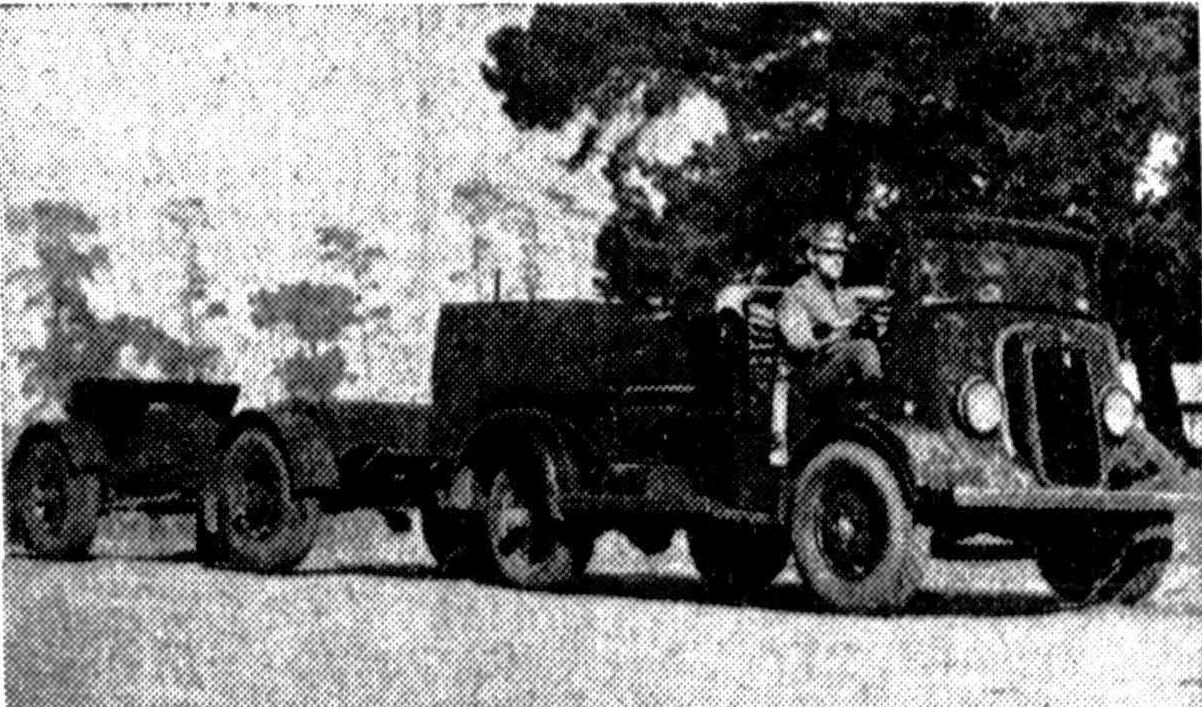
The forward control Ford V-8 truck, With gun attached.
There were winches and water tanks. In late 1943, working in 12-hour shifts over 12 days, Ford engineers produced belly tanks of up to 250 litres capacity for New Guinea-based P47 Thunderbolt aircraft. These gave the fighter planes the needed additional range to shoot down 200 Japanese planes in one raid. Aircraft engines were reconditioned.
GM Holden, too, played a pivotal role. An uneasy peace brought fears of a new war, which turned out to be the ‘Cold War’. In 1945-1946 the government was determined that Australia should achieve industrial self-sufficiency; full local manufacture of cars was deemed indispensable. Secondary benefits were employment and increased personal mobility.
As can be read above Ford, like all other car manufacturers, experienced a post WWII 'boom'.
In 1956 Ford Australia purchased 162 hectares in Broadmeadows. Head office lent the Bolte Victorian government £90,000 for rail, water and sewerage. The original Geelong factory became an engine plant. A revised version of the Mark 2 Zephyr, to be known as the Mark 2A, was scheduled for local manufacture. The plant opened in August 1959 with Zephyrs and the gargantuan Fairlane sedan and Ranch Wagon.
In late 1958 Charlie Smith and a team viewed the refurbished Zephyr in Dearborn and didn’t like it. Offered the Falcon instead, Smith sent a historic telegram: ‘Cancel Zephyr’.
The Ford Falcon was manufactured in Australia according to its North American design, with the first model rolling off the production line at Ford's Broadmeadows plant on June 28, 1960. It differed little from the American design apart from conversion to right hand drive, and the Falcon soon proved unable to cope on harsh Australian roads, sparking a massive effort to introduce running engineering changes to improve its reliability. By the mid-1960s, the car was substantially different to its North American cousin and was offered in sedan, wagon, coupe, utility and panel van styles.
Production of the North American Falcon, upon which the Falcon was now loosely based, ended in 1970, forcing Australia to go it alone on design. The first true all-Australian Ford Falcon arrived with the XA model in June 1972.
The Falcon had been an Australian automotive icon for most of its 56 years in production, playing a prominent part in Australian life, popular culture and motor racing. Falcons have served as taxis, police cars, family runabouts, transport for tradespeople and have been the winning car many times in the Australian Touring Car Championship and at the annual Bathurst 1000 touring car race, where the Falcon's reputation for engineering excellence was cemented by the early 1970s through the Falcon GT and GTHO muscle car variants.
Ford had manufactured more than four million units since 1960, and has topped the sales charts on many occasions. Until 2016, the Falcon line-up was offered in sedan and utility body styles, however in the past panel vans, station wagons, and hardtops were offered. Falcons had dominated the ranks of taxis in Australia and New Zealand, along with sister car, the Ford Fairlane. Performance variants of the Falcon have been used extensively for pursuit work for many years.
In 1971 a truck assembly plant was opened in Broadmeadows and four years later the world’s first right-hand drive Louisville emerged. Ford Australia already had its own design centre. In 1972 an emissions laboratory was opened at the proving ground and the plastics plant so crucial to the 1979 XD model was announced.
In 1980 the Homebush plant was updated for the Laser.
Ford Australia manufactured its last V8 engine on November 25, 1982 before switching to four-cylinder engines for the Telstar. That year Ford outsold Holden for the first time (139,318 to 139,181). In 1985 Ford Australia had a 24.5 per cent market share.
In 1987 came a new paint facility. Two years later a joint-venture with Nissan in response to the Button Car Plan, which aimed to reduce the number of Australian automotive manufacturers, saw the Nissan Pintara rebadged as a Corsair and the Falcon ute with a Nissan badge (did even one buyer not know it was a Ford?). [2.]
On 23 May 2013 Ford Australia announced that it would stop making cars after 88 years due to uncompetetive manufacturing costs and lacklustre sales. The carmaker's annual financial report, for the previous year, showed a loss of A$141m dollars (£90m/$136m) after tax for the 2012 financial year. This followed a loss of A$290m in 2011 and a total loss of A$600m over the preceding five years, as a result, 1,200 staff would lose their jobs.
Ford had two main factories, both in Victoria: located in the Geelong suburb of Norlane and the northern Melbourne suburb of Campbellfield. The Ford Discovery Centre, a museum of the history of the Ford Motor Company in Australia was also located in Geelong, but now has been closed, the site is now been occupied by Deakin University.
Between 1972 and 2016, Ford Falcons were fully Australian designed. It also produced a four-wheel-drive model called the Territory, which also ceased production in 2016. Production of the Falcon ceased with the closure of the Broadmeadows (Campbellfield) and Geelong engine and panel stamping plants. The Geelong factory produced its last Australian-made straight-six and V8 engines on 26 September 2016. Assembly at Broadmeadows ceased on 7 October 2016. [3.]
